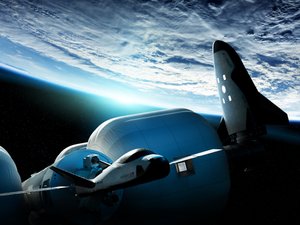
George Mason University has been awarded its first-ever space mission as part of a $19.5 million endeavor by NASA to launch a satellite aimed at helping improve our understanding of the expanding universe.
The Landolt NASA Space Mission, named after late American astronomer Arlo Landolt, will have its mission control based out of George Mason's Fairfax County campus.
With a tentative launch set for 2029, this satellite will serve as an "artificial star" some 22,000 miles above the Earth's surface that's capable of emitting its own light. Scientists will then be able to use this light from the satellite to calibrate telescopes to better measure the brightness of stars near and far by comparing emitted photon levels from these stars to those that come artificially from the satellite. A star's photon levels can shed insights into its age and distance, which in turn can offer more details about the expansion rate of the universe and, perhaps, whether a planet orbiting these stars can support life.
About the size of a bread box, this small but insightful satellite could unlock unanswered questions in astrophysics via more accurate readings, NASA said. Peter Plavchan, a George Mason associate professor of physics and astronomy, is leading the mission as its principal investigator; Eliad Peretz, a technology program manager at NASA's Goddard Space Flight Center, serves as the deputy principal investigator.
“This mission is focused on measuring fundamental properties that are used daily in astronomical observations,” Peretz said in a statement. “It might impact and change the way we measure or understand the properties of stars, surface temperatures, and the habitability of exoplanets.”
The satellite is being built in partnership with the National Institute of Standards and Technology in Gaithersburg and Blue Canyon Technologies, a unit of Arlington-based RTX Corp. Others on the mission team include: California Institute of Technology; Lawrence Berkeley National Laboratory in California; Mississippi State University; Montreal Planetarium and iREx/University of Montreal; the University of Florida; the University of Hawaiʻi; the University of Minnesota, Duluth; and the University of Victoria in British Columbia. Over two dozen people are on the mission's research team.
Casual observers from the Earth's surface won't be able to see the satellite or the light it emits with the naked eye but personal telescopes can be used to locate it.
George Mason, in partnership with Reston-based STEM institute Interstellar Dreams, opened a space center at the College of Science Research Hall in August 2022 as part of an effort to encourage local middle school students to pursue careers in the aerospace industry.




